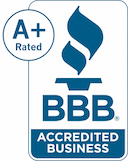Our Stats
Learn MoreOur team has over 1,000 years of combined experience in helping people recover from addiction.
19,000+
Patients Treated
8
Physicians
20+
Registered Nurses
25
Counselors
4
Case Managers
Frequently Asked Questions
Can I start the intake process online?
Yes, you can start the intake process online by completing our form below:
What Makes Us Unique
Industry Accredited, Exceptional Care
We hold ourselves to the highest standards, and it’s apparent in our A+ rating with the Better Business Bureau and the accreditations and memberships we hold.
Was this page helpful?
Share
Thank you for your feedback.
Your feedback is important to us and will be used to improve the quality of our articles. Please do not use this form as a contact form or input personal information.
If you are in crisis or need immediate help dial 9-1-1. Or if you are interested in entering treatment and want to know more, call us at 972-848-0221 for immediate assistance.
Helpline Information
While we are unable to respond to your feedback directly, we'll use this information to improve our content. If you or someone you know is struggling with addiction and need help, call us at 972-848-0221 for immediate assistance.
Helpline Information
Comments submitted



